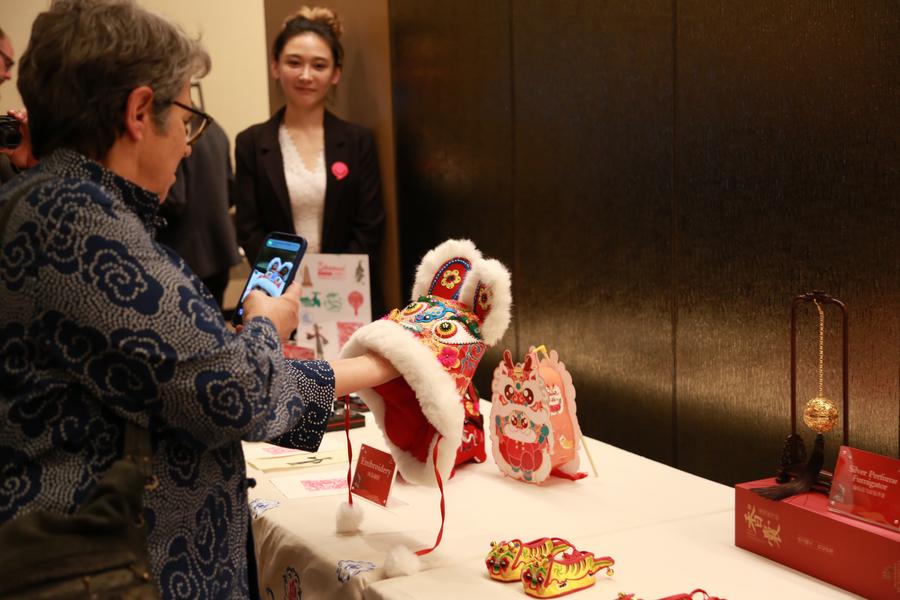Global Civilization Initiative: The Fight for Dreams

The GCI calls for exchanges and mutual learning between different civilizations.
The Global Civilization Initiative (GCI) reflects Chinese President Xi Jinping’s vision of the fundamental role played by tolerance, coexistence, exchanges and mutual learning among different civilizations in advancing the process of modernization of humanity.
President Xi Jinping’s vision is a response to a unipolar world consolidated with the end of the Cold War, which opened the way to a world guided by the criteria of exploitation and whose only center of world power was once again located in the West.
This supposed order of the world brought with it the idea of the “end of history”, and therefore, of the triumph of the single thought marked by a neoliberal economic model, based on the exploitation and suffering of peoples. This hegemony of interpreting history exclusively from the lens of a particular civilization inevitably leads to discord between peoples and can even lead to hostilities or serious diplomatic disagreements between nations.
This capital-centric approach and unbridled materialism have been the pillars of a contemporary society that has experienced an economic boom, but at the same time, it has generated discouraging consequences, a growing loss of material and spiritual values.
Rightly and in opposition to this dominant vision, the Global Civilization Initiative emerges with firm and decisive steps, from which it is emphasized that the various existing civilizations are rich in nuances and constitute an invaluable shared heritage of humanity.
In an increasingly interconnected world, it is undeniable that the actions and decisions of humanity transcend national borders, and the future of each country is intricately linked to that of the others. In this era of rapid change and global complexities, collaboration and mutual understanding are indispensable tools for building a brighter future.
The GCI calls for exchanges and mutual learning between different civilizations, from tolerance to embracing diversity and to transcending prejudices that limit the perception of others. Coexistence, in turn, calls for sharing the common space that is the world, and seeking joint solutions to common challenges based on the experiences and knowledge of each civilization to consolidate a multipolar world that needs to be strengthened in a dynamic of egalitarian and orderly multilateralism.
The GCI focuses on five main principles: (i) principle of independence, exploring diversified paths to modernization, always thinking about an ecological civilization, (ii) helping others, it is imperative to help others succeed, one’s own success and making sure that everyone can enjoy the results of modernization, (iii) strong leadership, to forge ahead and ensure firm leadership on modernization, (iv) uphold common values, uphold common principles, promote more cultural exchanges among civilizations and open new paths to ensure the continuity of the modernization process, (v) people first, ensure that modernization and development are people-centered.

Exchanges and mutual learning weave bonds that transcend borders and allow for joint growth, cooperation and understanding among peoples. In a constantly evolving global scenario, it is imperative to recognize that there is no monopoly on wisdom, each civilization has something unique and valuable to contribute to the garden of world civilization.
Modernization is not a patent of some countries to subjugate others, and there is no single option towards development. Modernization cannot be simplified with a magic formula, nor can external models be brought up, that is the lesson of history for those who know how to understand it.
Modernization is the product of the observance of the relevant general laws of each culture, its national conditions and its unique particularities. A meeting point between material and spiritual civilization. By embracing these ideas, a furrow is built in which intercultural dialogue and mutual understanding can bear fruit: a peaceful and enriching coexistence for the human community of civilizations.
The GCI proposes the need to change the capital-centered approach and excessive materialism. There is an urgent need to reassess priorities and find a balance between economic progress and integral human well-being.
The GCI is a historical trajectory, the constitution of a multipolar world is irreversible, the difference is the early or late acceptance of this reality. The history of humanity is full of contradictions, and it is these that stimulate its development, change and transformations.
The GCI strengthens an egalitarian and orderly multilateral world, in which hegemonic thinking has no place. A collective construction in which dialogue and cooperation overcome competition and zero-sum games. The disproportionate influence of some states is set aside to give way to the collective construction of power based on equality, mutual respect, ideas, arguments and conviction.
The Global Civilization Initiative shows that the fate of the world is in the hands of each of the states and the future of humanity depends on what they choose. Despite this, Chinese society is willing to promote the construction of this global voice, together with those other peoples in building a community with a shared future for mankind, to create a hopeful future for all.
Hence a recurring phrase of President Xi Jinping “he who forges iron must be well forged”, in allusion to the call of the Chinese people and in particular the historic task that the Communist Party of China must assume with the incremental development of socialism with Chinese characteristics to propel this cause and materialize the great inspiring dream.
The author is Director, PhD in Public and Business Management, Central American Institute of Public Administration (ICAP/SICA), and Researcher of Center for Historical Research of Central America, University of Costa Rica.
The article reflects the author’s opinions, and not necessarily the views of China Focus.
 Facebook
Facebook
 Twitter
Twitter
 Linkedin
Linkedin
 Google +
Google +










